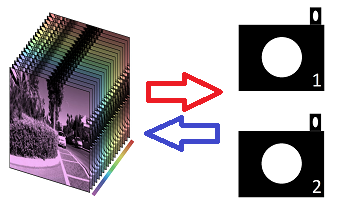
Spectral Reconstruction (SR) algorithms seek to map RGB images to their hyperspectral image counterparts. Statistical methods such as regression, sparse coding, and deep neural networks are used to determine the SR mapping. All these algorithms are optimized ‘blindly’ and the provenance of the RGBs is not considered. In this paper, we benchmark the performance of SR methods—in order of increasing complexity: regression, sparse coding, and deep neural network—when different RGB camera spectral sensitivity functions are used. In effect, we ask: “Are some cameras better able to recover spectra from RGBs than others?”. In our experiments, RGB images are generated by numerical integration for a fixed set of hyperspectral images using 9 different camera response functions (each from a different camera manufacturer) plus the CIE 1964 color matching functions. Then, we train SR methods on the respective RGB image sets. Our experiments show three important results. First, different cameras <strong>do</strong> support slightly better or worse spectral reconstruction but, secondly, that changing the spectral sensitivities alone does not change the ranking of different algorithms. Finally, we show that sometimes switching the used camera for SR can give a greater performance boost than switching to use a more complex SR method.

In Spectral Reconstruction (SR), we recover hyperspectral images from their RGB counterparts. Most of the recent approaches are based on Deep Neural Networks (DNN), where millions of parameters are trained mainly to extract and utilize the contextual features in large image patches as part of the SR process. On the other hand, the leading Sparse Coding method ‘A+’—which is among the strongest point-based baselines against the DNNs—seeks to divide the RGB space into neighborhoods, where locally a simple linear regression (comprised by roughly 102 parameters) suffices for SR. In this paper, we explore how the performance of Sparse Coding can be further advanced. We point out that in the original A+, the sparse dictionary used for neighborhood separations are optimized for the spectral data but used in the projected RGB space. In turn, we demonstrate that if the local linear mapping is trained for each spectral neighborhood instead of RGB neighborhood (and theoretically if we could recover each spectrum based on where it locates in the spectral space), the Sparse Coding algorithm can actually perform much better than the leading DNN method. In effect, our result defines one potential (and very appealing) upper-bound performance of point-based SR.